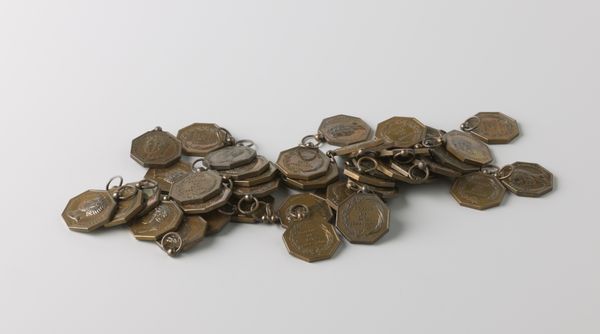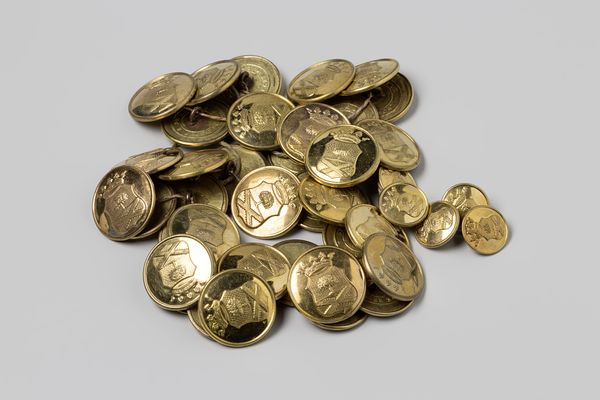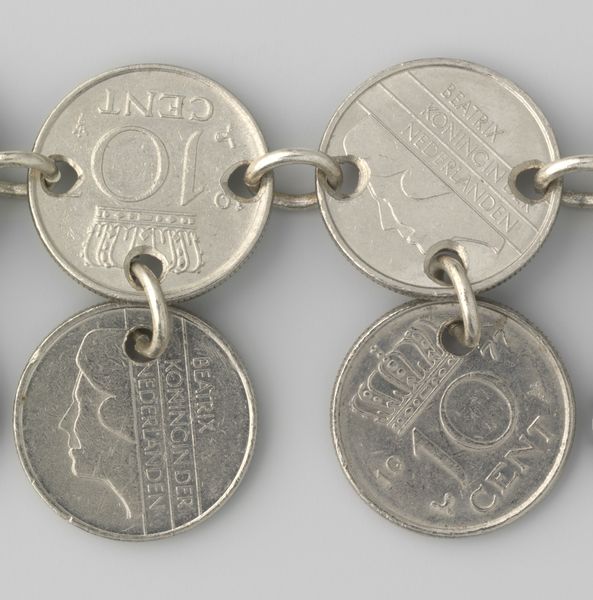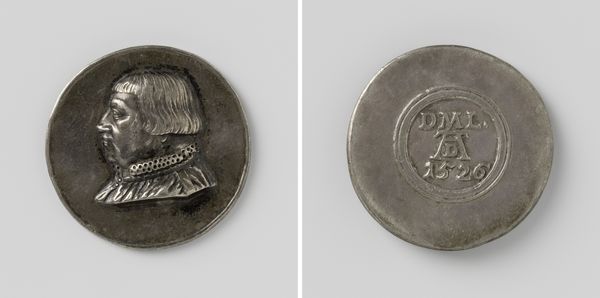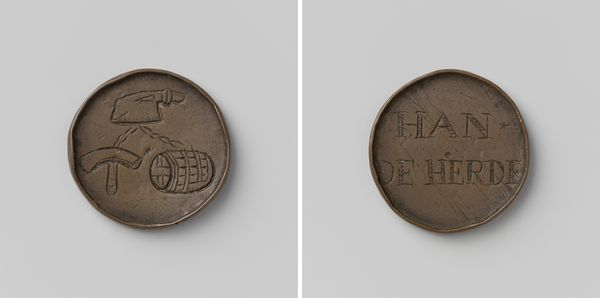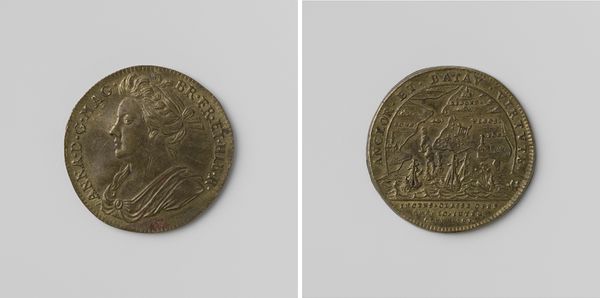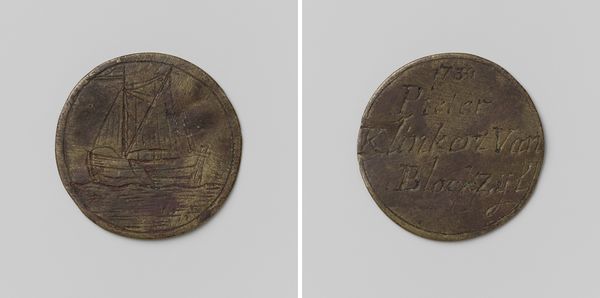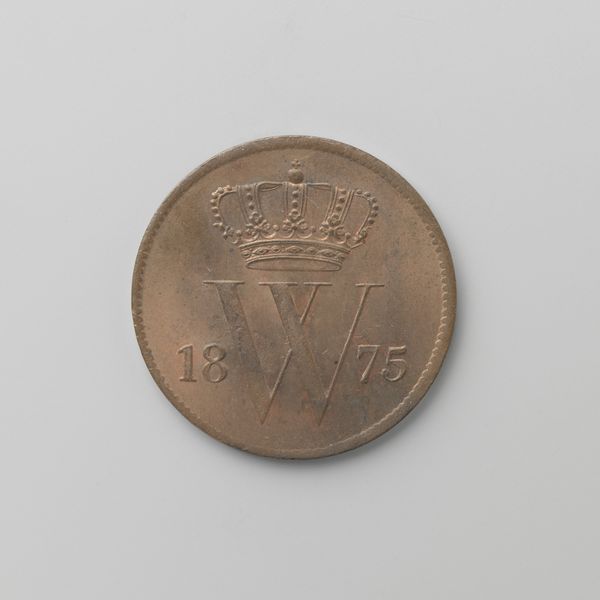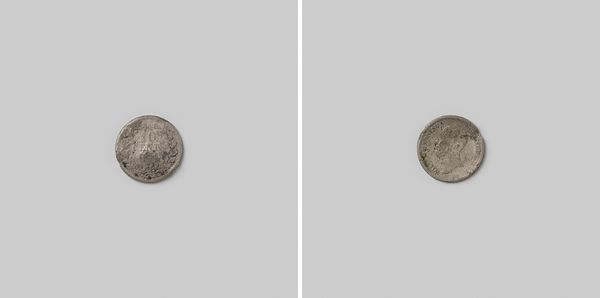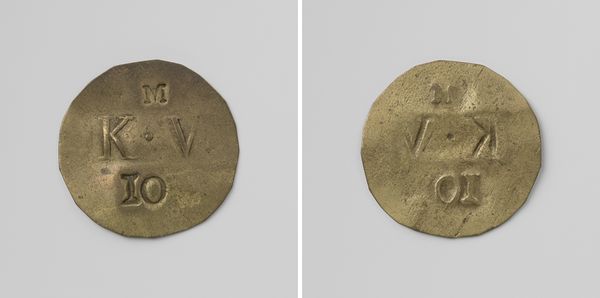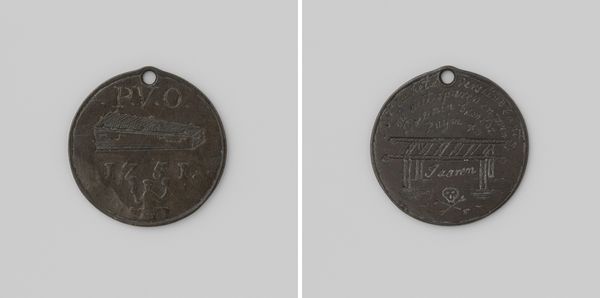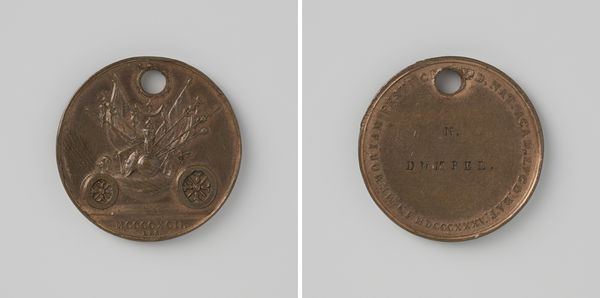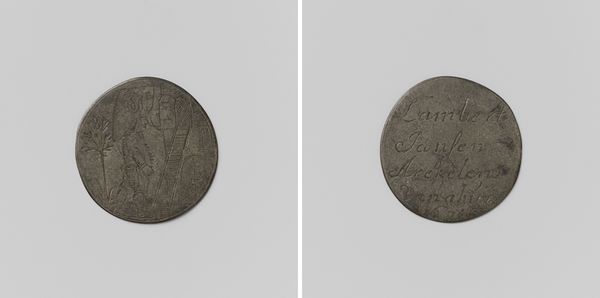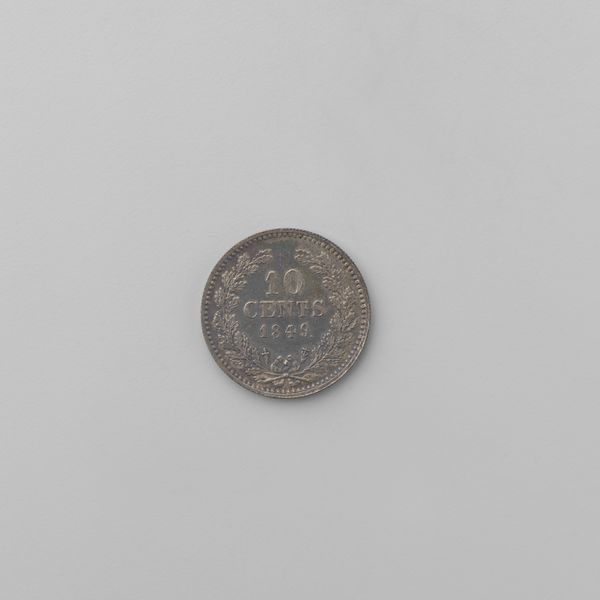
Oorlog op Java, groot draagteken uitgereikt aan de deelnemers, ter ere van Willem I Frederik, koning der Nederlanden 1830
0:00
0:00
metal, relief, sculpture
#
portrait
#
neoclacissism
#
metal
#
sculpture
#
relief
#
sculpture
#
history-painting
Dimensions: length 4.3 cm, length 3.5 cm, length 3 cm, width 3 cm, weight 18 gr
Copyright: Rijks Museum: Open Domain
Curator: The work before us is a collection of commemorative medals, titled "Oorlog op Java, groot draagteken uitgereikt aan de deelnemers, ter ere van Willem I Frederik, koning der Nederlanden," made circa 1830, fashioned by David van der Kellen. What is your initial reaction? Editor: A mass of metal—cold, industrial, but on close inspection, each seems quite distinct. The sheer quantity speaks to a system of…reward, I suppose? What kind of labor was involved in minting so many? Curator: They commemorate the Java War, a colonial conflict. Looking at these medals, it’s impossible not to consider the violent and exploitative context. These were awarded to the Dutch participants, essentially celebrating their role in suppressing the Indonesian population. How can we view them responsibly in the face of such atrocities? Editor: The medal themselves are fascinating objects—neoclassical in style, with what look like reliefs depicting Willem I Frederick. To truly analyze this, we have to look at the mining and extraction, transportation of these medals to colonial combatants; the social history embedded in its materiality cannot be ignored. Curator: Exactly. And how were they received? These medals intended to bolster national pride and legitimize colonial power, functioned as tools for the symbolic subjugation of a people. Did the individual soldiers truly believe this narrative, and if not, did their socio-economic situation still lead them to war? Editor: Perhaps these functioned almost as tools for their individual self, not grand socio-economic gain: simple keepsakes from the front line. That utilitarian consideration has to be added into our consideration of social domination. Curator: A chilling thought. In acknowledging their place within these larger events, we grapple with uncomfortable truths about our history and ongoing legacy, recognizing those systematically ignored. Editor: For me, it all comes back to thinking about each one made and delivered. Where did all that metal come from, who minted all these things. What social conditions generated a landscape ripe for war? It’s hard to get more specific than that! Curator: That is precisely what makes objects such as these simultaneously troubling and compelling to understand and teach from: the complex convergence of material, intent, and socio-political realities they represent. Editor: Indeed; it really forces us to trace all the tendrils to see just what such metal means.
Comments
No comments
Be the first to comment and join the conversation on the ultimate creative platform.

